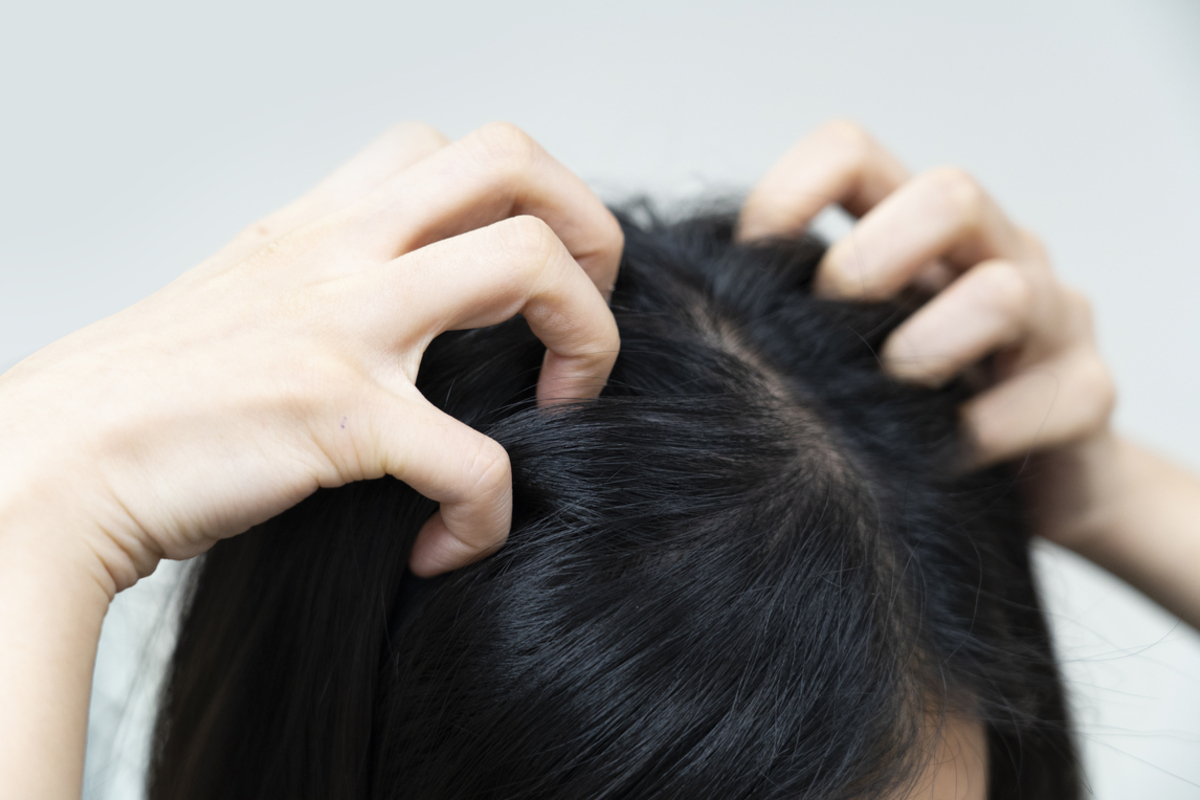Head lice infestation, or pediculosis, is a condition in which parasitic insects called Pediculus humanis capitis infest the scalp and the hair on your head. Although head lice are often depicted as an infection that only strikes people who have poor hygiene or a lower social status, the truth is that this condition crosses all of those boundaries, and affects the whole population equally. Six to 12 million cases of head lice infestations are reported each year in the US. In some regions, and some social circles in Europe, up to 20 percent of people are infected.

Head lice are most common in children aged three to 12, and they infest girls more often than boys. Surprisingly, this can't be explained by hair length. Studies found no relation between hair length and the prevalence of head lice. It's rather that head-to-head contact is more frequent in girls. A Norwegian study found that the prevalence of head lice infestation correlated to school attendance, suggesting that interaction between children in schools and similar institutions is an important route of transmission.
Pediculosis is not a dangerous disease, at least outside of Africa. In Africa, especially Ethiopia, this parasite has been proven to transmit several bacterial diseases. However, these bacteria weren't found in European head lice.
Head lice: What symptoms can you expect?
Sometimes, the infestation shows no symptoms, and people affected are unaware that they have an infection. In other cases symptoms do emerge, and itching is the most common one of these. The itching sensation is most prominent in the back of the head, and behind the ears, as those are the parts of the scalp the head lice prefer. This insect dislikes light, and tends to spend more time on the parts of the scalp that are not directly exposed to light. The louse saliva contains a chemical that widens the blood vessels, and, possibly, an anticoagulant as well. The itching is the result of an allergic reaction to the saliva.
Head lice infestation is usually suspected after lice or nits are seen on the scalp. The doctor might perform several different diagnostic procedures. One of the most common ways to diagnose head lice is by sticking tape to the infected area, and examining it under a microscope. A wood lamp can also be used to find the nits. Skin scrapings are sometimes done to rule out fungal infections.
Besides a fungal infection, a few other conditions share some of the symptoms with pediculosis. Some of those conditions are eczema, folliculitis, scabies, and impetigo.
How can you get rid of head lice?
There are several different options to treat head lice. Head lice can be treated without the use of medicine, by shaving the affected area, and removing the lice and the nits manually. A special comb can also be used. This comb has finer and more dense teeth than the regular comb, and is used to comb out the parasites and their eggs, while causing them damage. This procedure is usually done when the hair is wet. The results of this method vary.
As for drugs, several different topical treatments are available: permethrin, malathion, lindane, and benzyl alcohol, to name a few. The only oral drug to treat head lice is ivermectin. However, due to several side effects, this drug is not used commonly, and is only recommended if the parasite is resistant to topical treatment. It should be noted that neither of these drugs kill the eggs, so the treatment should be repeated after 14 days.
How can pediculosis be prevented?
Luckily, I wasn't infected, but a lot of my friends were. We were advised not to sit close to each other, and to keep our stuff in our bags, in the locker room, during PE. The kids who tested positive didn't engage in PE, though. So, in regards to that, all close contact should be avoided. Also, avoid sharing head gear, combs, and other personal equipment.
As for sheets, pillows, clothes, and other cloth objects, the good thing is that lice cannot survive for more than three days if they don't have a host. They die either from starvation or cold, as they are dependent on the host's body temperature. So, the easiest thing to do would be to leave all the stuff you suspect to be infested with lice outside for a few days. For a faster result, you could wash the stuff for 30 minutes at 60°C (140F). Combs, brushes and stuffed toys can be cleaned this way as well.
Carpets, floor and furniture where the infected person spends time should be vacuumed. On the other hand, you don't need to pay special attention to your pets, since they don't play a role in head louse transmission as this parasite only infects humans (you should, however, treat them with antiparasitic medicine regularly, to prevent other parasitic infections).


Your thoughts on this